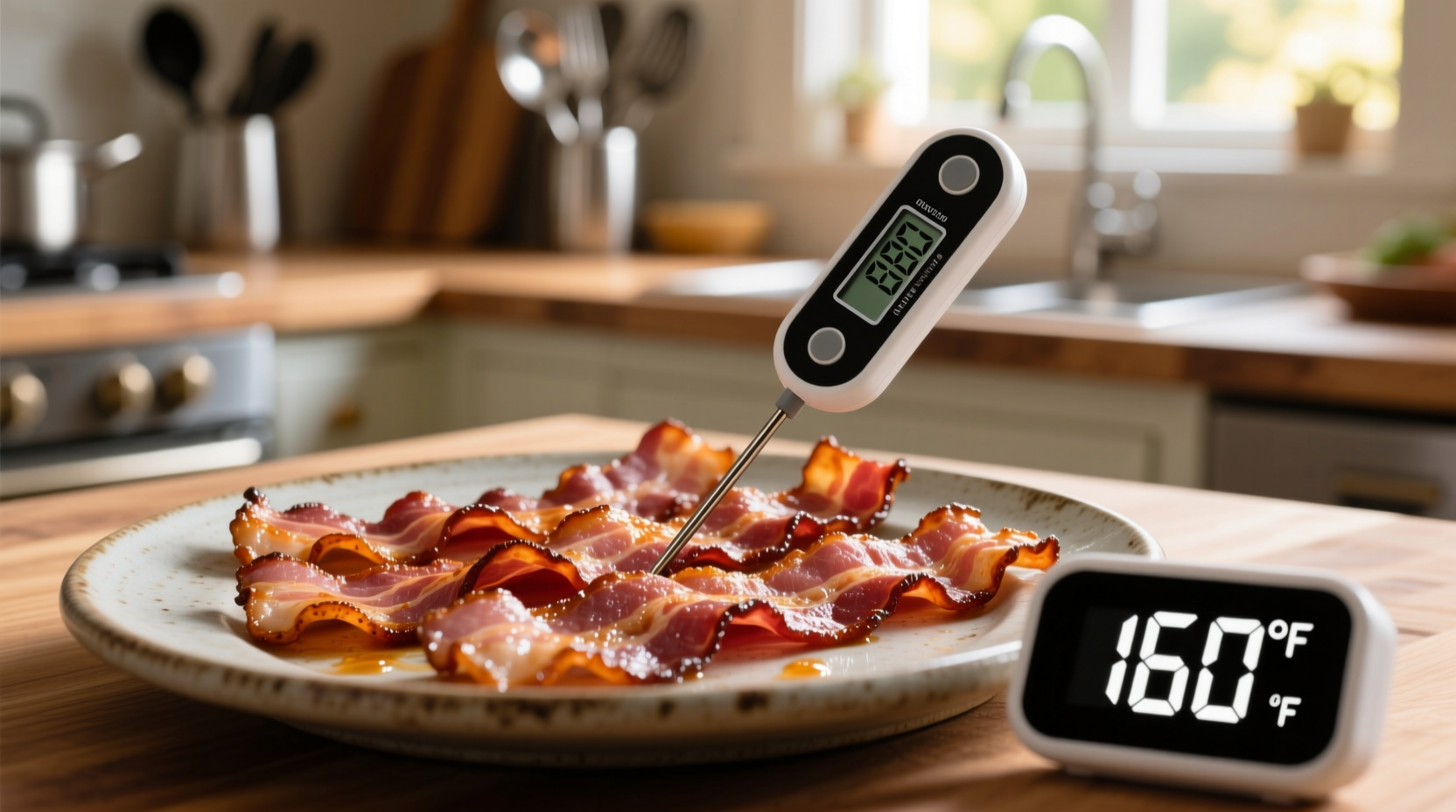When you've cooked a batch of crispy bacon and life gets busy, it's tempting to leave it sitting out while you tackle other tasks. But understanding exactly how long cooked bacon can safely remain at room temperature is crucial for protecting your health and avoiding food poisoning. This isn't just about preserving that perfect crispness—it's a serious food safety matter that affects millions of households.
The Science Behind Bacon Safety Timeframes
Cooked bacon enters what food safety experts call the "temperature danger zone" the moment it cools below 140°F (60°C). This danger zone, defined by the USDA Food Safety and Inspection Service, spans from 40°F to 140°F (4°C to 60°C), where bacteria multiply rapidly. The high fat content in bacon creates an ideal breeding ground for pathogens like Staphylococcus aureus and Clostridium perfringens.
According to research published by the Centers for Disease Control and Prevention, bacterial counts can double every 20 minutes within this temperature range. This exponential growth means that what seems like a harmless two-hour countertop sit can transform your delicious bacon into a potential source of foodborne illness.
Temperature Danger Zone: Critical Timeframes
| Ambient Temperature | Maximum Safe Time | Key Risk Factors |
|---|---|---|
| Below 90°F (32°C) | 2 hours | Bacterial growth begins accelerating after 1 hour |
| Above 90°F (32°C) | 1 hour | Rapid bacterial multiplication, especially in humid conditions |
| Refrigerated (40°F/4°C or below) | 4-5 days | Slows but doesn't stop bacterial growth completely |
| Frozen (0°F/-18°C) | 1-2 months | Prevents bacterial growth but quality degrades over time |
What Happens When Bacon Sits Too Long
When cooked bacon remains in the temperature danger zone beyond recommended limits, several dangerous processes occur:
- Bacterial multiplication - Pathogens like Staphylococcus aureus can reach dangerous levels within hours
- Lipid oxidation - The fats in bacon begin to break down, creating off-flavors and potentially harmful compounds
- Moisture migration - Bacon loses its crisp texture as moisture redistributes
- Visible spoilage signs - Eventually leading to mold growth or slimy texture
It's crucial to understand that you cannot always see, smell, or taste when bacon has become unsafe to eat. The FDA Food Code emphasizes that harmful bacteria can grow to dangerous levels without changing a food's appearance, taste, or smell.

Proper Storage Techniques for Maximum Safety
When you've finished cooking bacon, follow these professional kitchen-tested steps to ensure food safety:
- Cool rapidly - Spread bacon in a single layer on a wire rack to cool faster than leaving it in a pile
- Refrigerate promptly - Transfer to airtight container within the 2-hour safety window (1 hour in hot conditions)
- Label with date - Use masking tape to note when bacon was stored
- Store properly - Place in the main compartment of your refrigerator, not in the door where temperatures fluctuate
- Reheat thoroughly - When using stored bacon, heat to 165°F (74°C) to eliminate any potential bacterial growth
How to Identify Spoiled Cooked Bacon
While following time guidelines is the safest approach, sometimes you might question whether bacon left out "just a bit too long" is still safe. Look for these definitive signs of spoilage:
- Visual changes - Discoloration beyond normal browning, especially green, blue, or white spots indicating mold
- Texture changes - Slimy or sticky surface rather than the expected crisp or slightly chewy texture
- Odor changes - Sour, fishy, or generally "off" smell rather than the familiar savory bacon aroma
- Taste changes - Bitter or sour flavor (though you should never risk tasting potentially spoiled food)
When in doubt, throw it out. The USDA consistently advises that if you're uncertain about food safety, it's always better to discard questionable items rather than risk foodborne illness.
Special Considerations for Different Environments
Certain situations require extra caution with cooked bacon storage:
- Outdoor events - At picnics or barbecues, keep cooked bacon in a cooler with ice packs if ambient temperatures exceed 75°F (24°C)
- Humid climates - High humidity accelerates bacterial growth, so consider reducing the safe timeframe by 30 minutes
- Large batches - Thick piles of bacon take longer to cool, effectively reducing your safe window
- Vacuum sealing - While this extends refrigerator life to 4-5 days, it doesn't change the initial 2-hour rule for room temperature safety
Myth vs. Reality: Common Bacon Storage Misconceptions
Several persistent myths about bacon storage could put your health at risk:
- Myth: "Bacon's salt content preserves it indefinitely at room temperature"
- Reality: While salt does inhibit some bacterial growth, it doesn't prevent all pathogens from multiplying in the danger zone
- Myth: "If it looks and smells fine, it's safe to eat"
- Reality: Dangerous bacteria like Staphylococcus aureus can produce heat-stable toxins that aren't destroyed by cooking and may not alter appearance or smell
- Myth: "Crispy bacon has less moisture so it's safer left out"
- Reality: Even crispy bacon contains enough moisture to support bacterial growth within the danger zone timeframe
Food Safety Resources for Home Cooks
For the most current food safety guidelines, consult these authoritative sources:
- USDA Food Safety and Inspection Service - Provides detailed guidelines on safe food handling
- CDC Food Safety Resources - Information on preventing foodborne illness
- FDA Food Code - Comprehensive food safety standards
- Your local cooperative extension service - Often provides region-specific food safety advice
Remember that food safety guidelines evolve as new research emerges. What your grandparents might have considered safe practice could now be recognized as risky behavior based on current scientific understanding of foodborne pathogens.











 浙公网安备
33010002000092号
浙公网安备
33010002000092号 浙B2-20120091-4
浙B2-20120091-4